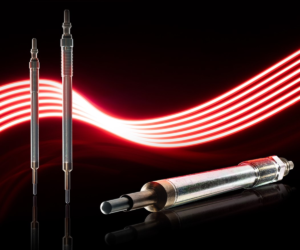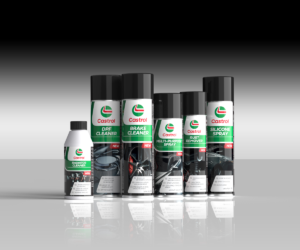This part of the report offers an insight into the basic structures and conditions of the German aftermarket. Over the last twenty years, the developments in the aftermarket have been observed and evaluated, bringing us up to the current market situation. Market volumes and market shares of all important groups or products are described here in detail and thus offer a compact overview of their current distribution on the German aftermarket. The basic conditions and factors affecting the development of the aftermarket, are presented. We consider and evaluate possible changes in the Independent Aftermarket as well as how far it is influenced by the activities of the original equipment, automobile and car part manufacturers.
The price of a single License for „The aftermarket” report is 3350 EUR. If you are interested in purchasing of this report, please e-mail us on alfred@motofocus.pl or martyna@motofocus.pl If you need some additional information, please call: +48 22 489-72-21
Table of content:
Part 1
1. About the study
1.1 Definition of terms and scope
1.2 Method
1.3 Important explanations for understanding the market data
2. The market situation in 2003
2.1 Market volume by product lines
2.2 Annual spending by drivers on passenger vehicle components (material only)
2.3 General market structures
2.4 Components including parts, chemical materials, accessories, tires, glass
2.4.1 Market shares of the sales channels at the repair level (order placement)
2.4.2 Market shares of the sales channels at the repair level (order fulfillment)
2.4.3 Market significance of the distributors at the distribution levels
2.4.3.1 Local distribution level
2.4.3.2 Regional distribution level
2.4.3.3 Supraregional distribution level
2.4.3.4 National distribution level
2.4.3.5 Manufacturer level
2.4.3.6 OES market vs. the independent aftermarket
2.5 Parts including wearing parts, body components, electric components/electronics, assemblies
2.5.1 Significance of the OES market/independent aftermarket from the repair level to the manufacturer’s level
2.5.2 Detailed view of the repair level
2.6 Wearing parts
2.6.1 Significance of the OES market/independent aftermarket from the repair level to the manufacturer’s level
2.6.2 Detailed view of the repair level
2.7 Electric components/electronics
2.7.1 Significance of the OES market/independent aftermarket from the repair level to the manufacturer’s level
2.7.2 Detailed view of the repair level
2.8 Body/Metal parts
2.8.1 Significance of the OES market/independent aftermarket from the repair level to the manufacturer’s level
2.8.2 Detailed view of the repair level
2.9 Assemblies
2.9.1 Significance of the OES market/independent aftermarket from the repair level to the manufacturer’s level
2.9.2 Detailed view of the repair level
2.10 Automotive chemicals including auto paint, oil, other chemicals
2.10.1 Significance of the OES market/independent aftermarket from the repair level to the manufacturer’s level
2.10.2 Detailed view of the repair level
2.11 Auto paint
2.11.1 Significance of the OES market/independent aftermarket from the repair level to the manufacturer’s level
2.11.2 Detailed view of the repair level
2.12 Lubricants
2.12.1 Significance of the OES market/independent aftermarket from the repair level to the manufacturer’s level
2.12.2 Detailed view of the repair level
2.13 Other chemicals materials including car care products
2.13.1 Significance of the OES market/independent aftermarket from the repair level to the manufacturer’s level
2.13.2 Detailed view of the repair level
2.14 Accessories
2.14.1 Significance of the OES market/independent aftermarket from the repair level to the manufacturer’s level
2.14.2 Detailed view of the repair level
2.15 Automotive glass
2.15.1 Significance of the OES market/independent aftermarket from the repair level to the manufacturer’s level
2.15.2 Detailed view of the repair level
2.16 Tires
2.16.1 Significance of the OES market/independent aftermarket from the repair level to the manufacturer’s level
2.16.2 Detailed view of the repair level
3. Network structures and trends in aftermarket distribution
3.1 General sales structures
3.2 Automotive repair shops
3.2.1 OES repair shops
3.2.2 IAM repair shops
3.2.2.1 Independent multi-brand repair shops
3.2.3 Paint and body shops
3.2.4 Tire retail
3.2.5 Auto parts specialty stores with automotive service
3.2.6 Automotive glass
3.2.7 Do-it-yourself
3.2.8 Discounters
3.3 Distributors
3.3.1 IAM distributors
3.3.1.1 Cooperations
3.3.1.2 Supraregional parts super-wholesalers (super-wholesalers)
3.3.1.3 Regional parts wholesalers
3.3.1.4 Local parts dealers
3.3.1.5 Direct marketers
3.3.1.6 E-business
3.3.2 OES distributors
3.3.3 Wholesale specialists
3.3.3.1 Automotive glass wholesalers
3.3.3.2 Tire wholesalers
3.4 The suppliers
3.4.1 The OEM business
3.4.2 The aftermarket business
3.5 The automobile industry
4. Distribution Scenarios
4.1 Parameter for the development of the scenarios
4.2 Aftermarket scenarios for automotive parts
4.2.1 Aftermarket parts scenario for “monopolizing market foreclosure”
4.2.2 Aftermarket parts scenario for a wide variety of operation types
4.2.3 Aftermarket parts scenario according to the assessment of WOLK & PARTNER CAR CONSULT
4.2.4 Overview of the three repair sales channel scenarios






Komentarze